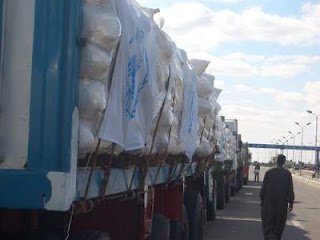-
In the Wake of Conflict, Gaza Faces Severe Public Health Challenges
February 4, 2009 By Lauren Herzer Risi
An 18-month blockade, three weeks of intense bombardment, and continuing sporadic violence are setting up the Gaza Strip for a “devastating humanitarian crisis,” according to the UN Office for the Coordination of Humanitarian Affairs. As of January 31, 1,380 Palestinians had been killed and 5,380 had been injured in the conflict, including many civilians. Additionally, the World Health Organization recently warned that…
Enduring [health] risks include complications and excess mortality in patients with chronic diseases as a result of the suspension of treatment and delayed access to health care during the conflict; diarrhea outbreaks from water-borne and food-borne diseases as a result of the lack of access to clean water and sanitation and the weak public health surveillance system; as well as long-term mental health problems as a result of the conflict.
Slightly more than twice the size of Washington, D.C., with a population of 1.5 million people, the Gaza Strip is among the most densely populated regions in the world. Gaza’s high population density has likely compounded residents’ vulnerability to white phosphorus, a highly flammable chemical that provides smoke screens for troop movements. The outrage provoked by its use by the Israeli Defense Forces (IDF) stems from the intense, uncontrollable fires it causes. The IDF has admitted to using white phosphorus in Gaza against Hamas and is investigating whether it also used it against residents, which is prohibited by the 1980 Convention on Conventional Military Weapons.
In 2008, prior to the war, the UN Relief and Works Agency reported that despite the humanitarian assistance flowing to Gaza, 51.8 percent of households were below the poverty line, and unemployment was at an unprecedented high of 45.3 percent. Prior to the recent conflict, 80 percent of the population was dependent on aid from the United Nations.
Although the current ceasefire has allowed for a slight increase in access to Gaza, humanitarian agencies and aid workers still struggle to get supplies into the territory. Day after day, truckloads of supplies—everything from food, clothing, and baby formula to blankets, plastic tarps, and technical equipment to draw water from the ground—sit at border crossings in Egypt, waiting for permission to enter Gaza. While Egyptians blame the Israelis for limiting access, Israeli officials claim that the Egyptians have not done enough to coordinate the flood of aid. Regardless of who is to blame, it is clear that limiting the access of humanitarian workers and supplies is having dire consequences for the residents of Gaza.
Photo: Humanitarian cargo waits at the Rafah border crossing on the Gaza-Egyptian border on January 9, 2009. Photo courtesy of Ekram Elhuni (World Food Programme) and Flickr user Peter Casier.
 A Publication of the Stimson Center.
A Publication of the Stimson Center.




